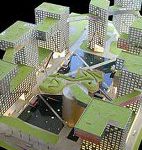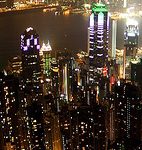In densely stacked Hong Kong, where seven million residents live on top of each other within a space of approximately 1,000 square kilometres, buildings account for 89% of electricity consumption and 70% of greenhouse-gas emissions.On the surface, these numbers are encouraging. The property sector, studies reveal, has the capacity to significantly reduce its greenhouse-gas emissions at little, no or negative cost with existing technology.
While new-build properties have the biggest opportunity to slash their emissions – with potential carbon savings of as much as 80% – the rest of the real-estate sector should not be dismissed. Existing buildings, which comprise the majority of Hong Kong’s building stock, still offer possible reductions of 20% to 30%. Measures available to achieve this include low-cost, small-scale energy efficiency improvements in heating, cooling, ventilation, air-conditioning, water heating, lighting and the use of more efficient appliances.
It sounds straightforward enough. But despite the sound economic logic, movement towards a greener building sector in Hong Kong has been stilted at best.
In many countries, tenant preference has been the main driver behind the “greening” of buildings. In Asia, multinational companies, usually the anchor tenants of new commercial buildings, encourage their property-management departments to contract new leases in green buildings. Lucy Carmody, executive director of Responsible Research, an environment, social and governance (ESG) research outfit that in early 2010 released an investor report on green buildings in Asia, points out that the real-estate industry in Hong Kong “suffers from a shortage of supply of the type of buildings which are in demand by both local leading companies and MNCs [multinational corporations].”
Alongside the perception of higher upfront costs, Carmody identifies the shortage of sites for new buildings as one key reason why sustainable-building initiatives have been slow to take off in Hong Kong. “The situation in China is different due to a strong focus on municipal-level sustainable city planning, green fiscal stimulus and many MNCs looking for large, newly built premises of the highest green specifications,” she says.
Another analysis considers the split incentive between the developer/owner of a property and the tenant, which has been labelled the “blame game”. Put simply, there is insufficient incentive for the developer to build in more energy-efficient equipment, even if the costs are recouped over its lifetime, as it is the tenant – and not the developer – who benefits from lower electricity bills. Developers are usually under pressure to complete the project in the shortest timeframe possible and at the lowest cost, and will only consider additional spending on technology if this impacts the buying or leasing decision.
Low electricity tariffs, which fail to internalise the true environmental, health and other associated costs of production and distribution of power, do not incentivise investment in energy efficiency either, though this problem is not particular to Hong Kong.
Perhaps the biggest obstacle to sustainability in Hong Kong’s building sector, however, is the lack of the kind of regulation that can correct market failures and signal to the relevant players that greenhouse-gas and energy-efficiency issues are in fact material. A new energy-efficiency law, known as the Building Energy Efficiency Bill, is currently pending but has already been criticised by environmental organisation Friends of the Earth (FoE) as being “nothing more than a fig leaf”. The lighting conservation standards for offices, restaurants and building atria adopted in the bill lag behind other countries. Take the standards for office lighting as an example: the bill recommends a maximum of 17 watts per square metre, well above the 7 watts per square metre applied in Australia and the 10.8 watts per square metre mandated in India.
“The energy conservation standard for lighting in the Mandatory Building Energy Codes (MBEC) for Hong Kong is of a developing-country standard that falls far behind mainland China and India,” says Edwin Lau, director of FoE Hong Kong. “So we are doubtful of our government’s commitment in conserving energy for the environment.”
How does the Hong Kong government justify adopting standards lower than those in mainland China or India? While there is no direct answer to this question, part of the explanation can perhaps be gleaned from the stakeholder-engagement process for the MBEC launched in December 2007, as documented in a report from the Climate Change Business Forum (CCBF), an initiative that aims to get Hong Kong’s businesses to collaborate on tackling climate change. While the consultation involved a large number of groups ranging from members of the public to professional organisations, the information gathered and the methodology employed in analysing the responses were largely untransparent.
According to the CCBF report, “Respondents have not been segregated or analysed by group or vested interest despite an apparent bias in the consultation towards property developers, owners and managers. In addition the assumptions behind government statements regarding the savings, costs and benefits of the proposed efficiency levels have not been published.”
In the absence of government regulations, the industry, led by property developers Swire Properties and Hong Kong Land, put together voluntary initiatives including the Hong Kong Building Environmental Assessment Method (HK BEAM) certification, which aims to measure, improve and label the environmental performance of buildings. It was inspired by a similar green-building rating system in the United Kingdom, the Building Research Establishment Environmental Assessment Method (BREEAM). As of October 2009, HK BEAM had provided recognition for enhanced building performance to nearly 200 Hong Kong properties, equivalent to 9 million square metres and 50,000 residential units.
In 2009, four industry leaders– The Construction Industry Council, the Business Environment Council, the BEAM Society and the Professional Green Building Council – came together to establish the Hong Kong Green Building Council, which aims to engage stakeholders and foster greater understanding of green building issues. The Council, supported by the Hong Kong Development Bureau, will take the lead in revamping voluntary green building labelling schemes and lobby for sustainable initiatives such as energy codes.
Experts in the industry are clear, however, that voluntary initiatives are no substitute for regulation. A 2009 survey conducted by property services firm Jones Lang LaSalle indicates that 70% of Hong Kong developers and landlords believe the government is not providing sufficient regulatory structures to promote sustainability in the real-estate sector. However, this may change as the government contemplates the adoption of a territory-wide carbon target of a 50% to 60% reduction in carbon intensity by 2020, with building energy efficiency slated as a major priority.
The Jones Lang LaSalle report concludes that, while there is recognition that developers and landlords play a critical role in promoting sustainability, the industry views government guidance as an essential supporting framework. “The regulatory framework will need a radical overhaul to deliver significant carbon reductions,” notes Liam Salter, chief executive of RESET Carbon Management, a firm that helps companies lower their carbon footprint, and one of the lead authors of the CCBF report. “The government has been particularly wary of regulating existing building stock and this will need to change.”
Ina Pozon has worked on water and energy issues in Asia for the past 10 years. In 2009, she developed Asia’s first investor and business focused water portal, the Asia Water Project. She also collaborated with the Beijing-based Institute of Public and Environmental Affairs (IPE) in building IPE’s Air Pollution Map and the Green Choice Alliance supply-chain management programme and was previously WWF International’s coordinator for its Asia Pacific Coal Initiative.
Homepage image from Renon-san


